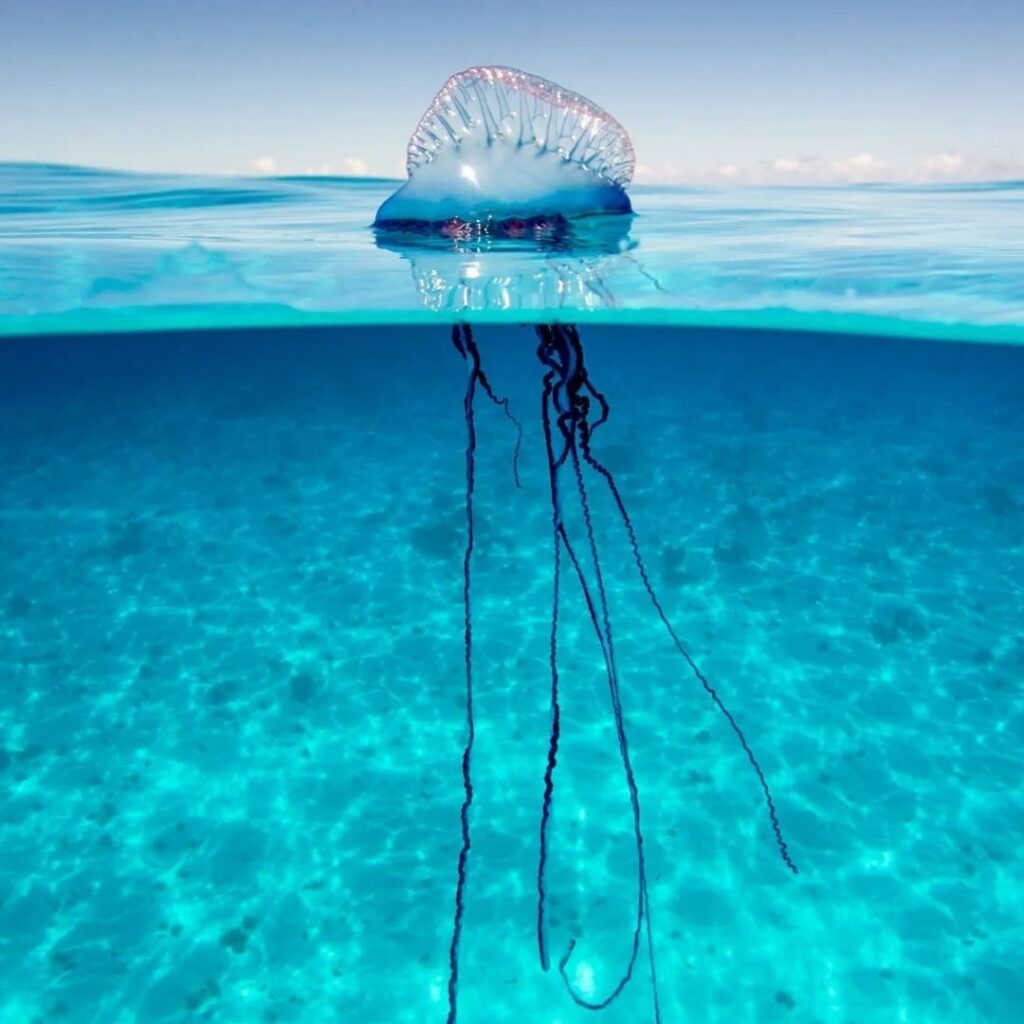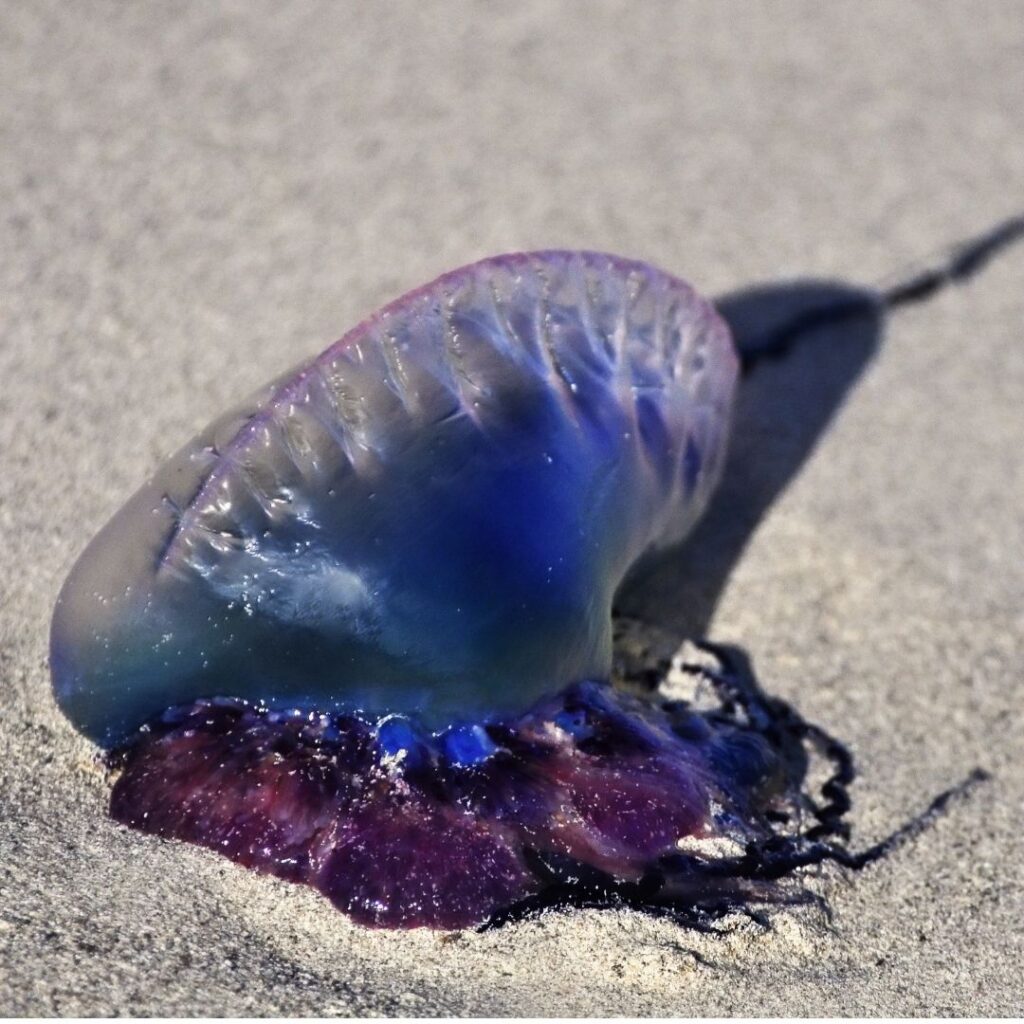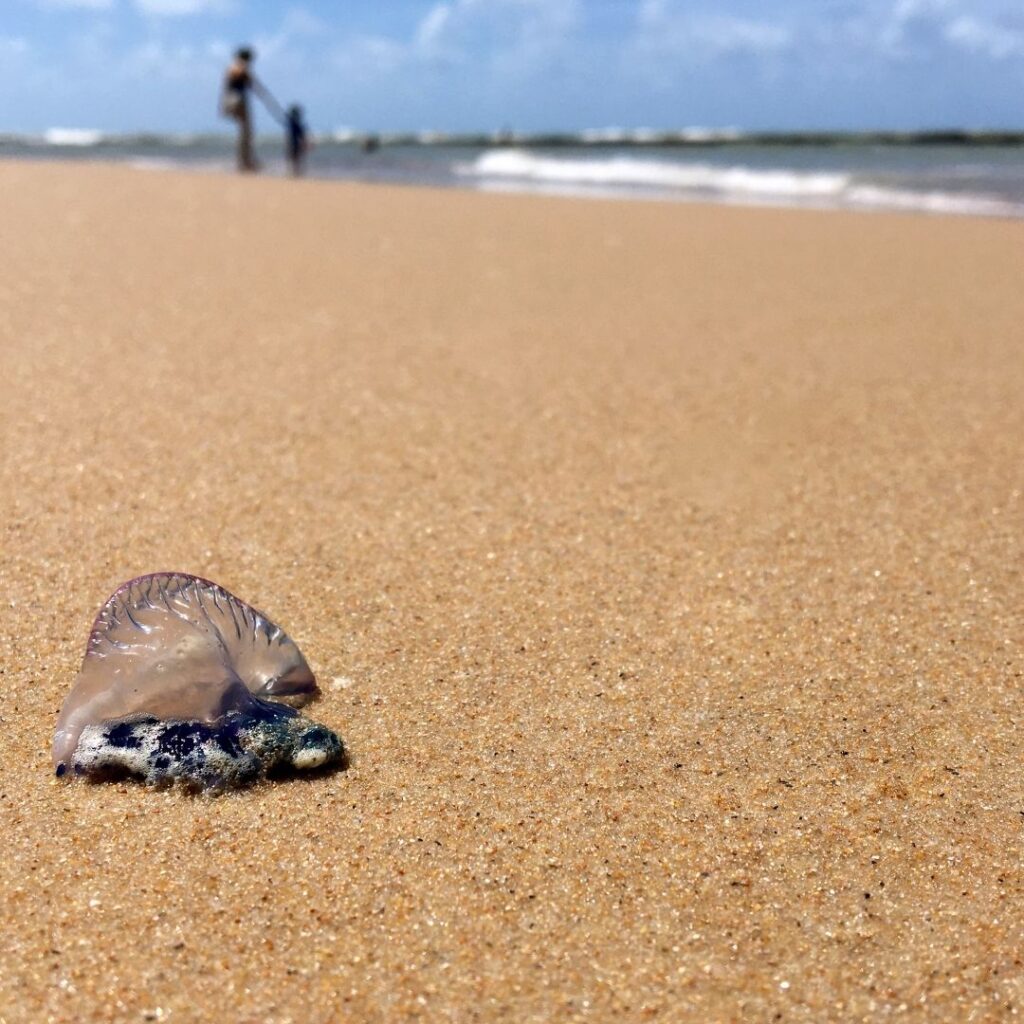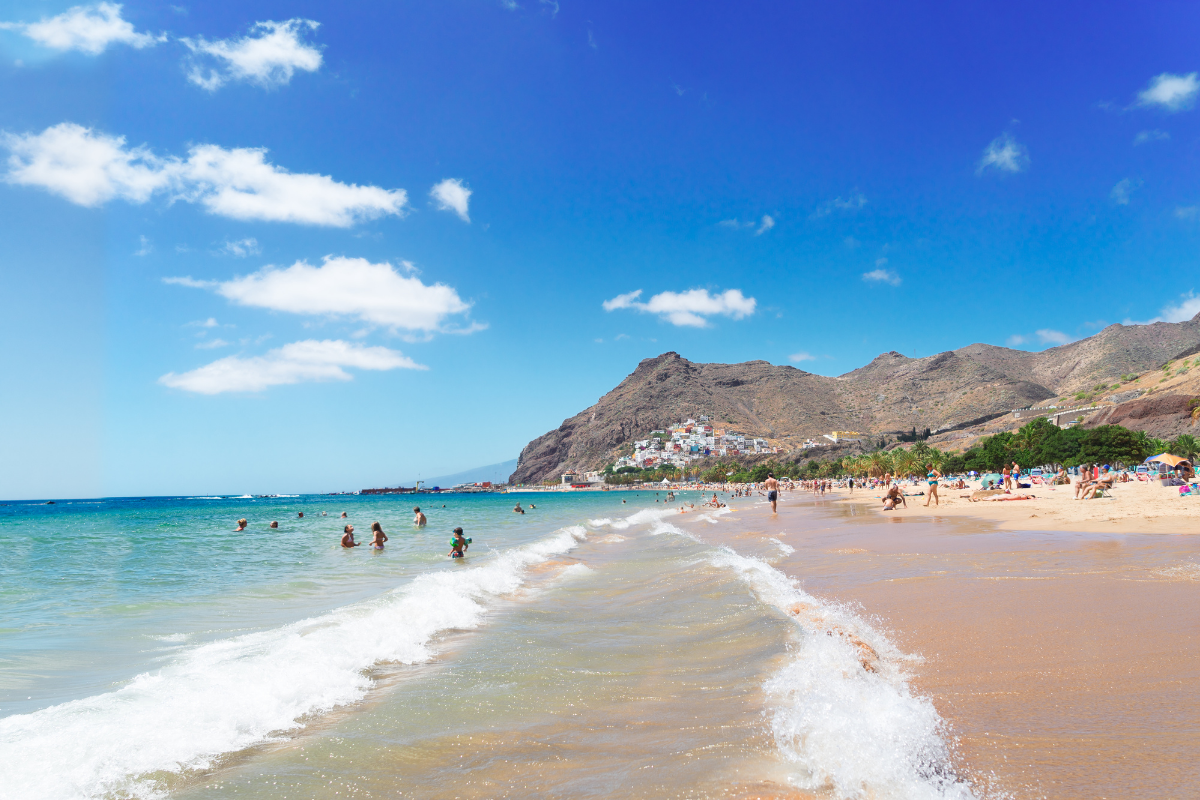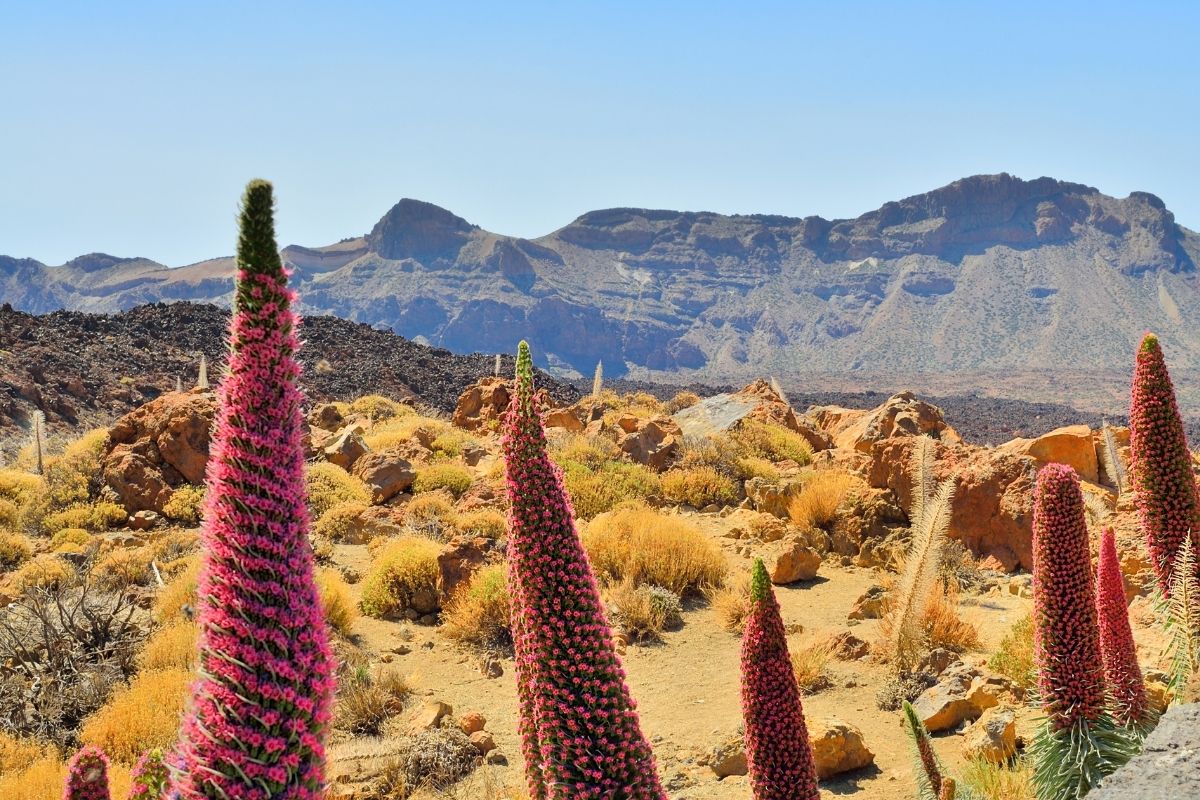Portuguese Man-of-War (Physalia physalis) – Beware of this beautiful but dangerous creature in Tenerife!
The waters around Tenerife are home to a fascinating world of underwater life, and one of the most intriguing, yet dangerous, inhabitants of the oceans is the Portuguese Man-of-War. Scientifically known as Physalia physalis, this colonial marine organism resembles a jellyfish, but in reality it has a completely different structure, more like a floating collection of microorganisms.
How did it arrive on our shores?
The Portuguese Man-of-War usually reaches the coast by the wind. Its presence in the region becomes more common during the winter months, when climate change and wind storms can bring it close to the beaches. That is why it is so important to know how to recognize it and what to do if you encounter it.
Appearance of the Portuguese Man-of-War
The Portuguese Man-of-War is distinguished by its beautiful but treacherous appearance. Its distinctive pneumatophore, resembling a blue, purple, or pink sail, floats above the water’s surface, while its long, thin tentacles hang down to catch prey. The tentacles can be 10 to 50 meters long! They are visible above the water, making them an easy target for curious eyes. However, their charm hides a danger.
Why is the Portuguese Man o’ War dangerous?
The bite of a Portuguese Man o’ War is very painful and can lead to serious health complications. Its tentacles are covered in microscopic cells called cnidocytes, which release toxins upon contact with the skin, paralyzing the victim and contributing to pain reactions in humans. Symptoms of a bite include:
- Fresh redness and a rash at the site of the bite.
- Intense pain, swelling, and inflammation.
- Potential complications include cramps and even systemic symptoms.
What to do if you see a Portuguese Man o’ War?
1. Don’t touch: Refuse any attempt to touch it, even if it’s dead – its toxins can survive for a long time.
2. Alert the emergency services: If you spot it on the beach or in the water, it’s important to notify local authorities or lifeguards so they can take appropriate measures and secure the area.
3. Stay calm after being bitten: Remove the person who may have been bitten from the water and seek medical attention as soon as possible. Wash the wounds with a sea salt solution, not fresh water. Removing any remaining tentacles with tweezers should also be done carefully – preferably wearing gloves.
4 .Monitor for symptoms: If symptoms worsen, go to the nearest health facility immediately, where treatment, such as corticosteroids, may be necessary.
Natural predators of the Portuguese Man o’ War
Although the Portuguese Man o’ War has several natural predators, such as sea turtles, octopuses and some species of sea snails, it is a key element of the marine ecosystem in its own right, feeding on fish and plankton.
Summary
The Portuguese Man o’ War is not only a fascinating but also a dangerous marine creature that can be found in the waters around Tenerife. Its beauty hides a potential danger, so caution and a quick response in the event of an encounter is extremely important. This colonial organism reminds us of the complexity and diversity of marine life, while also reminding us of the need for appropriate behaviour and respect for nature.
During your visits to the beaches of Tenerife, remember to enjoy the beauty of the surrounding nature, taking the appropriate precautions. If you have any doubts or concerns about the presence of the Portuguese Man o’ War, do not hesitate to contact the local authorities or specialists. This will allow you to enjoy your holiday without unnecessary risk.
